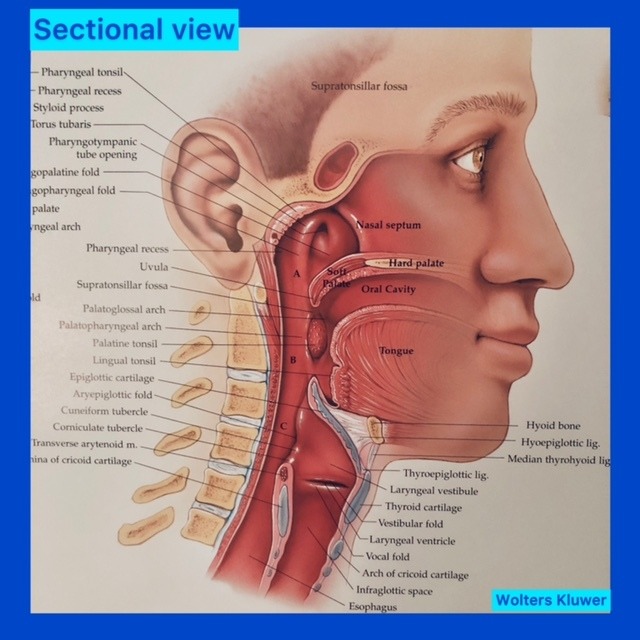
How the Normal Voice Works
I often suggest to students new to clinical voice placements to develop and practise a description of how the normal voice works. It’s an integral part of understanding voice production and empowering the voice patient with knowledge about their own instrument. So here’s a basic description
The voice box is located in the front of the neck. It is otherwise known as the larynx. We have two vocal cord muscles, just behind the Adam’s apple, which are moved and controlled with the help of different muscles throughout the neck. The power source of voice is breath from the lungs. Think of the lungs being the fuel tank. At rest, your vocal cords are open to allow the air to move freely in and out of the lungs. When you want to speak, the vocal cord muscles are innervated by branches of the vagus cranial nerve; as air flows out from the lungs the vocal cords move, acting like a vibrating valve that chops up the airflow from the lungs into audible pulses that form the sound. The muscles of the larynx adjust the length and tension of the vocal cords to ‘fine tune’ the sound and alter the pitch and tone. The tone of voice may be modulated to indicate feeling and emotion. Varying the pitch of ones voice makes it sound interesting and pleasant to listen to. The articulators (the parts of the vocal tract above the larynx consisting of tongue, palate, cheek, lips, etc.) articulate and filter the sound emanating from the larynx to make speech. The male and female larynx differ in size. The male larynx grows larger and as a result of this the pitch of the voice drops and deepens as the vocal cords become longer and thicker and vibrate together slower. Male vocal cords vibrate an average of 110 cycles per second; female vocal cords 180-220 cycles per second but this will vary greatly between individuals and the type of speech or singing task.
A voice quality will sound “normal” if the power source, the sound source and the articulators work in balance and efficiently. If one or other or all are disrupted voice may sound abnormal. A clinical case history and visual examination of the voice box is integral for diagnosis and to understand why a voice is not working normally.
Check out this Video and watch how the vocal cords vibrate as you speak and which muscles are involved.
Category: Voice